These Chinese Honey Garlic Spare Ribs are sweet, sticky, and packed with honey garlic flavor. The meat is very tender and it will fall right off the bone when you bite into it. It is ready in 35 minutes so you can easily make this any night of the week.
Can't get enough of pork ribs? Try my Chinese Dry Fried Ribs next!
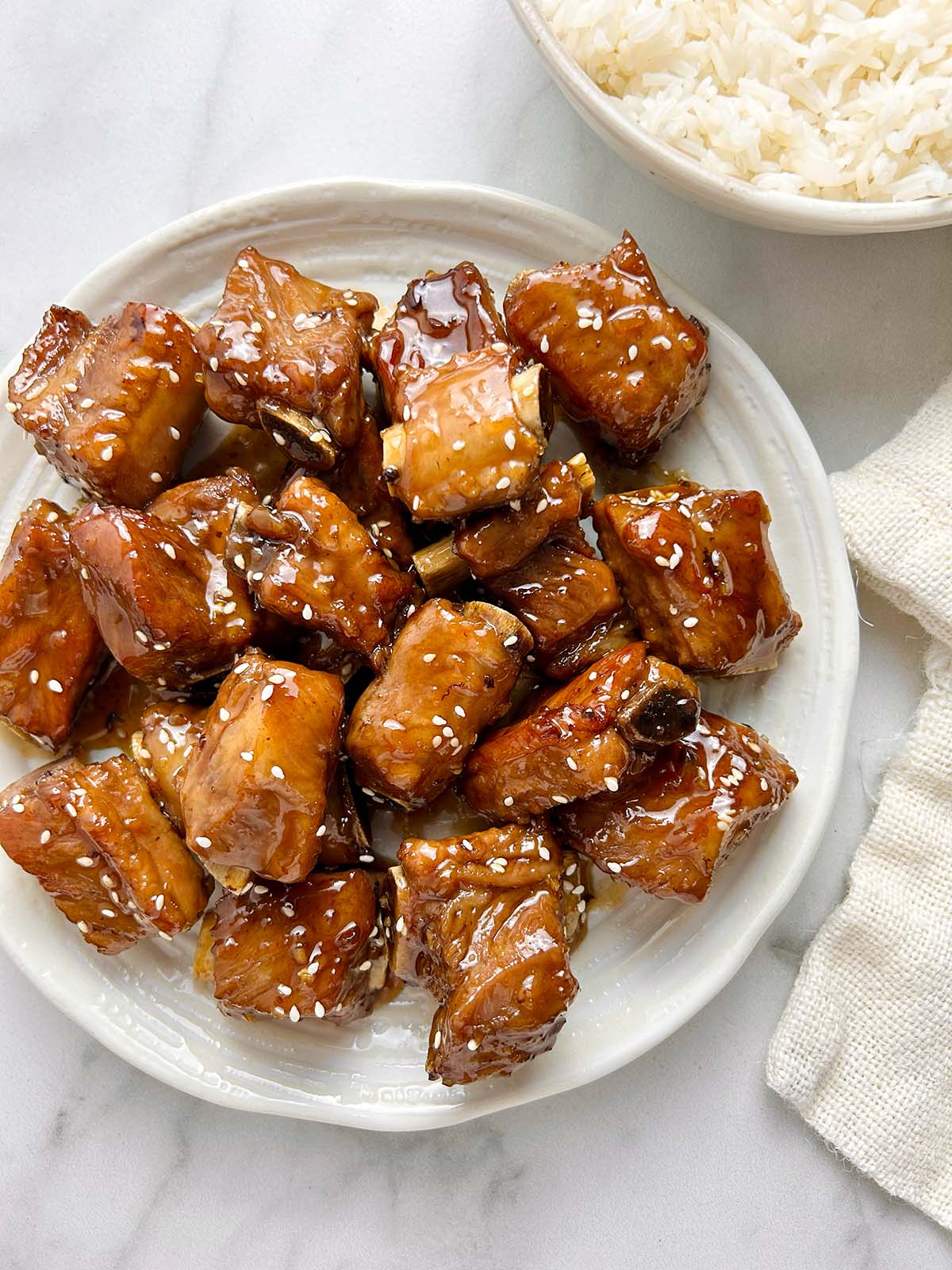
🥡 About This Recipe
I just learned about this recently, but apparently, honey garlic sauce was invented in Canada. I grew up eating it at Chinese buffets so I always assumed it was a Chinese thing. But it seems it is mostly popular in Canada.
One of my favorite honey garlic dishes is honey garlic spare ribs. It is a simple dish you can make by panfrying ribs and then simmering in honey garlic sauce. You can also deep-fry the ribs, which I will touch on at the end of this post.
🥩 What Ribs To Use?
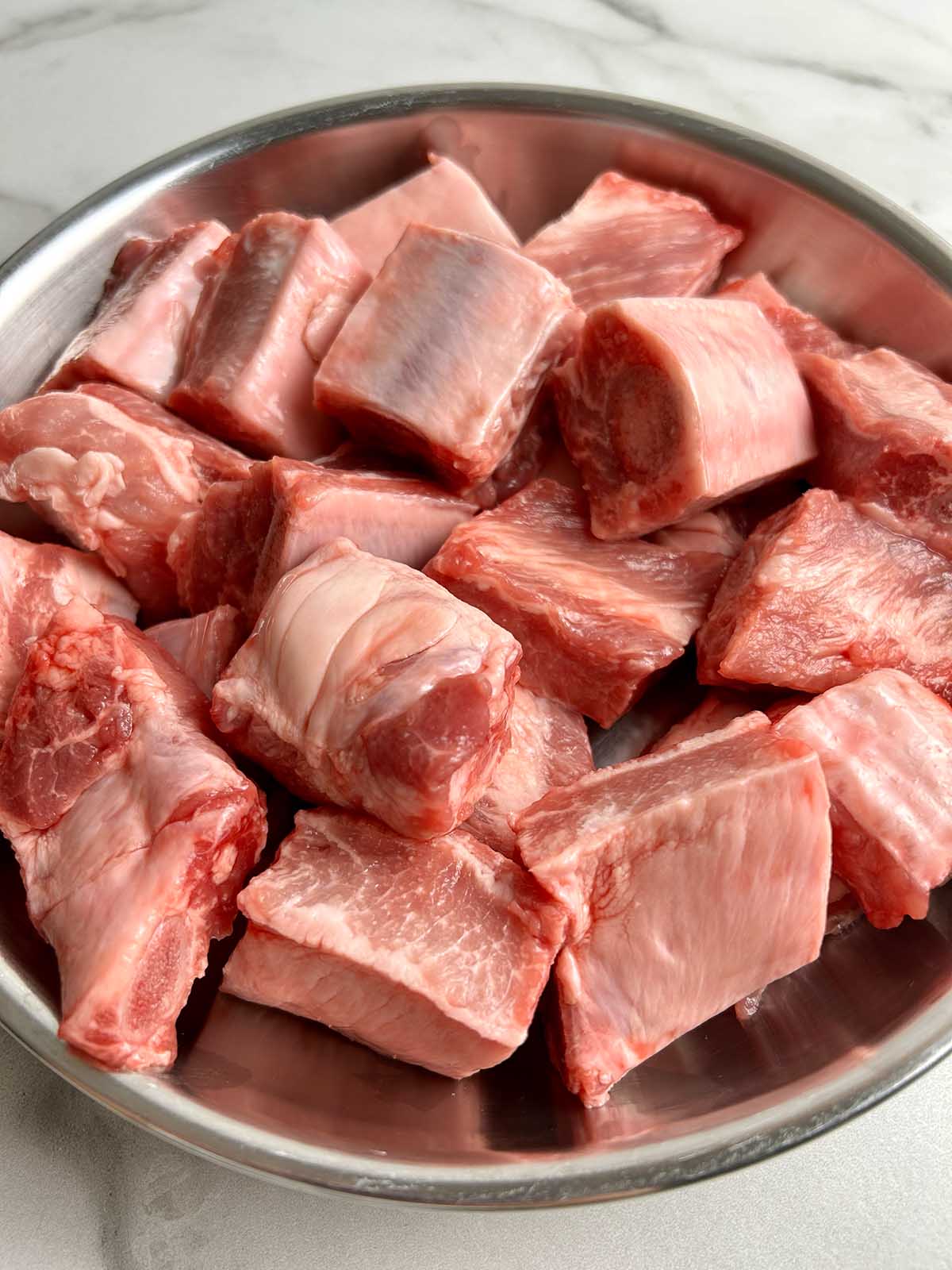
I am using spare ribs (also known as side ribs). Ask your butcher or the meat clerk to cut them into 1 to 2-inch pieces. You do not want to use full-sized ribs, as they are very difficult to sear properly because of their curved shape.
The last time I made this, I tried cutting them myself, and I chipped my butcher's knife while cutting through one of the really bony pieces. I ended up throwing out the whole batch just as a precaution. So yeah, don't make the same mistake as me. Ask your butcher to cut them.
🧂 Ingredients
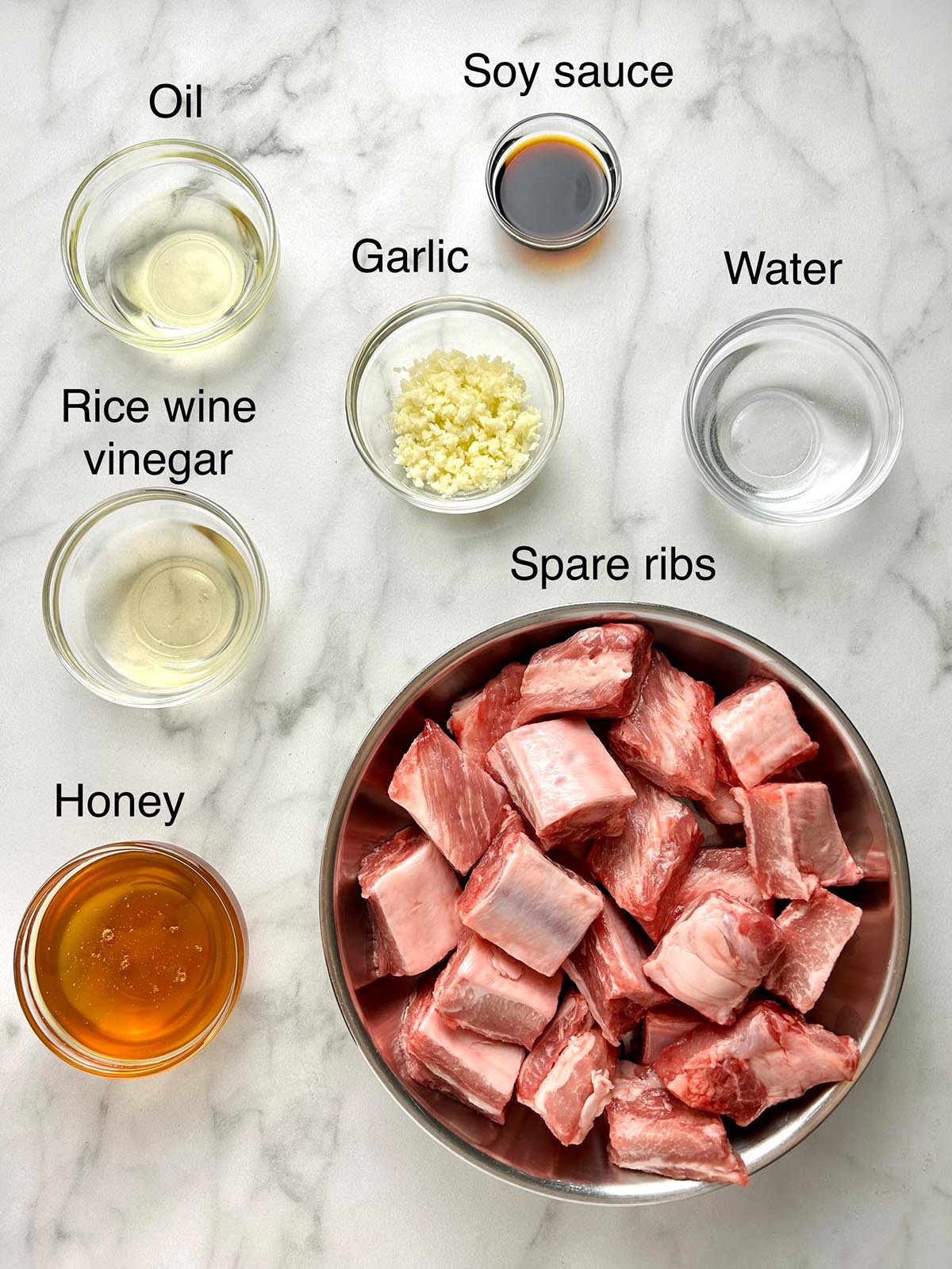
- Spare Ribs (also called side ribs): Make sure you get them chopped into 1-2 inch pieces.
- Sauce: Honey, garlic, rice wine vinegar, soy sauce, water, and Chinkiang vinegar (Chinese black vinegar).
- Oil for panfrying the ribs.
🔪 Instructions

STEP 1: Rinse the ribs under cold tap water then pat them dry with paper towels.
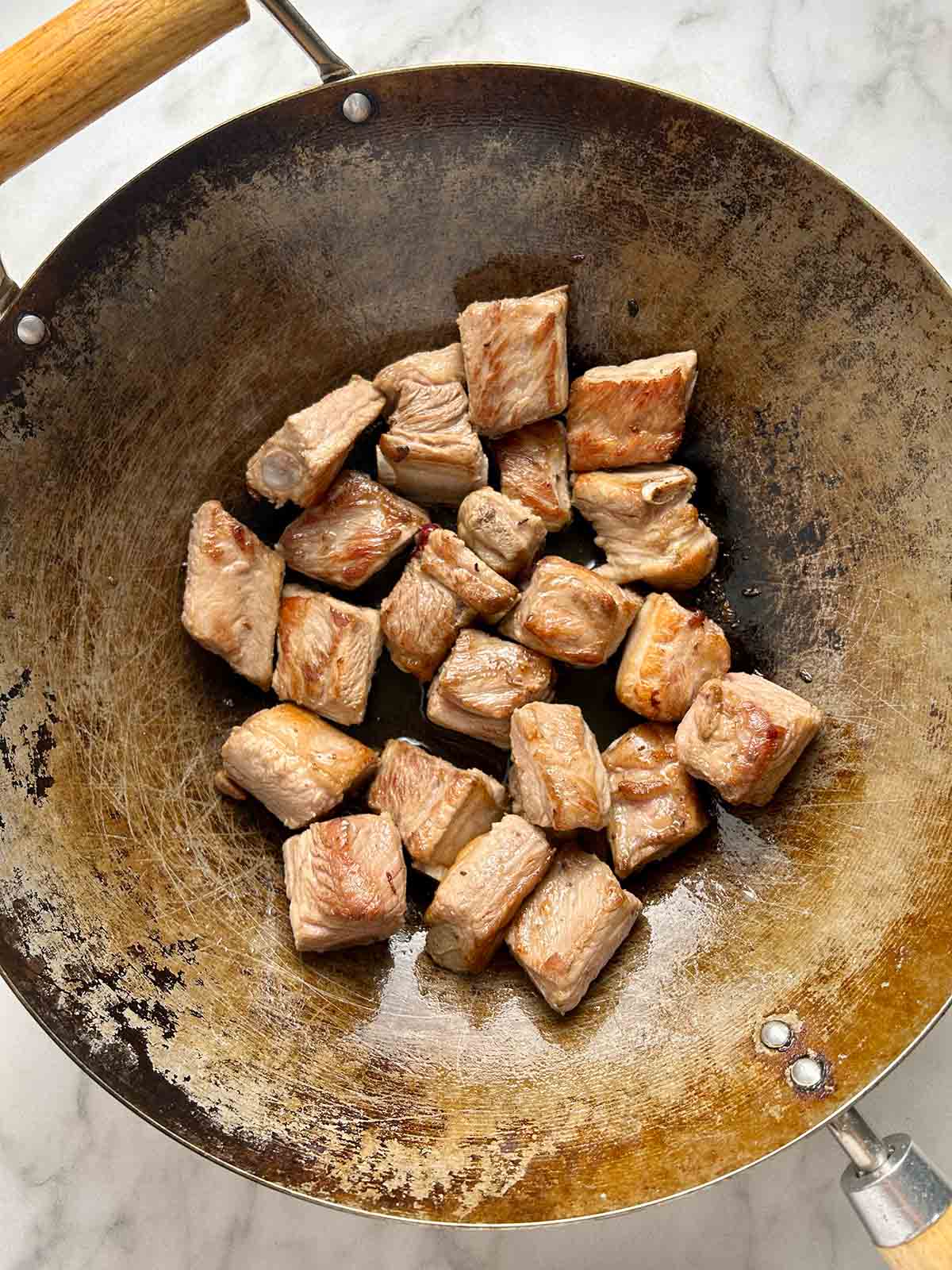
STEP 2: Heat 2 tablespoons oil in a wok over high heat. Add the ribs in a single layer and cook them for 1 minute without touching them. The ribs will initially stick to the wok but they will release after 1 minute. Flip the ribs over and cook the other side for another 1 minute until golden brown.
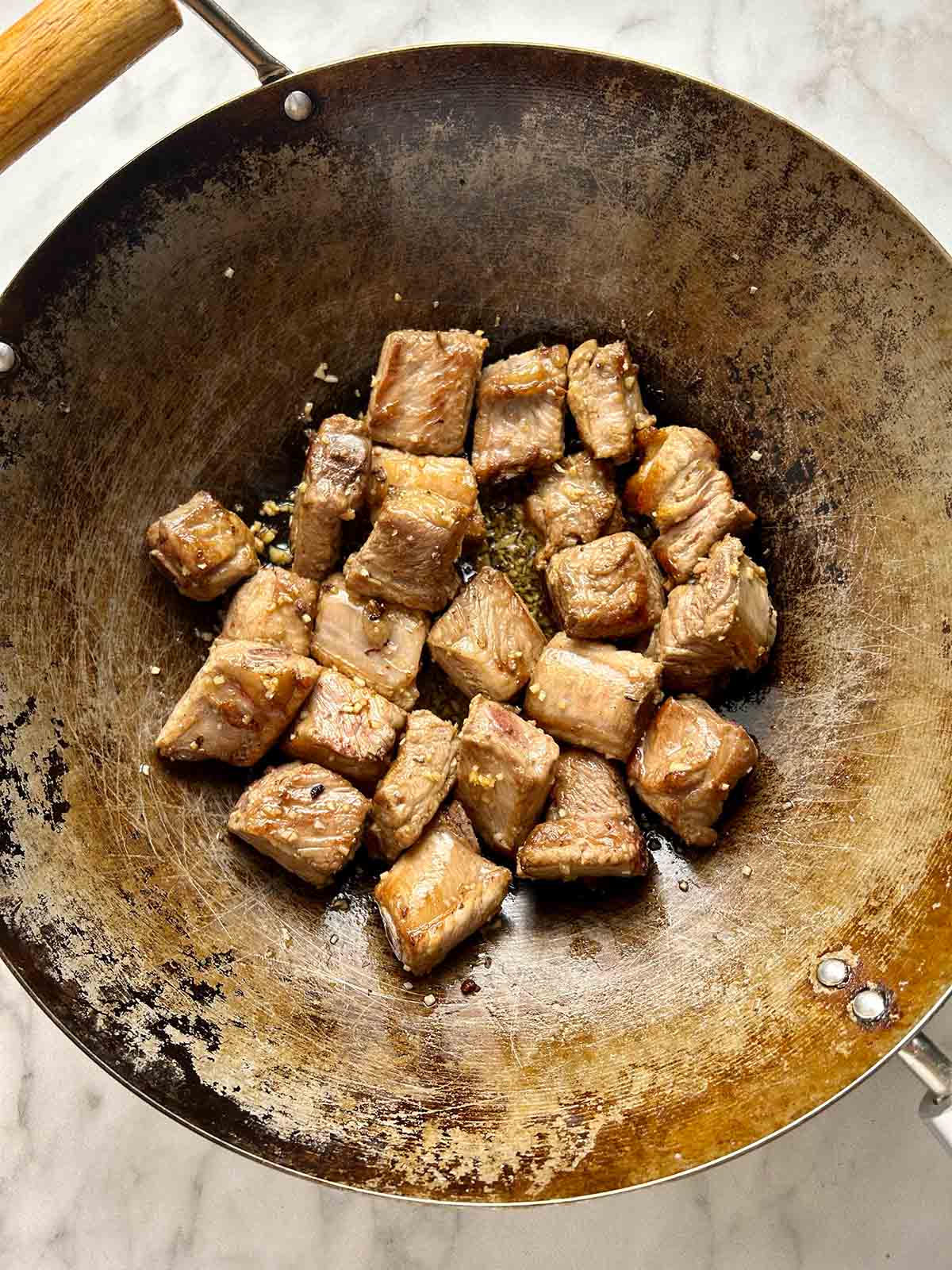
STEP 3: Reduce the heat to medium, add the garlic, and cook for 45 seconds until fragrant. Be careful not to burn the garlic here. If the wok is too hot, remove it from the heat.
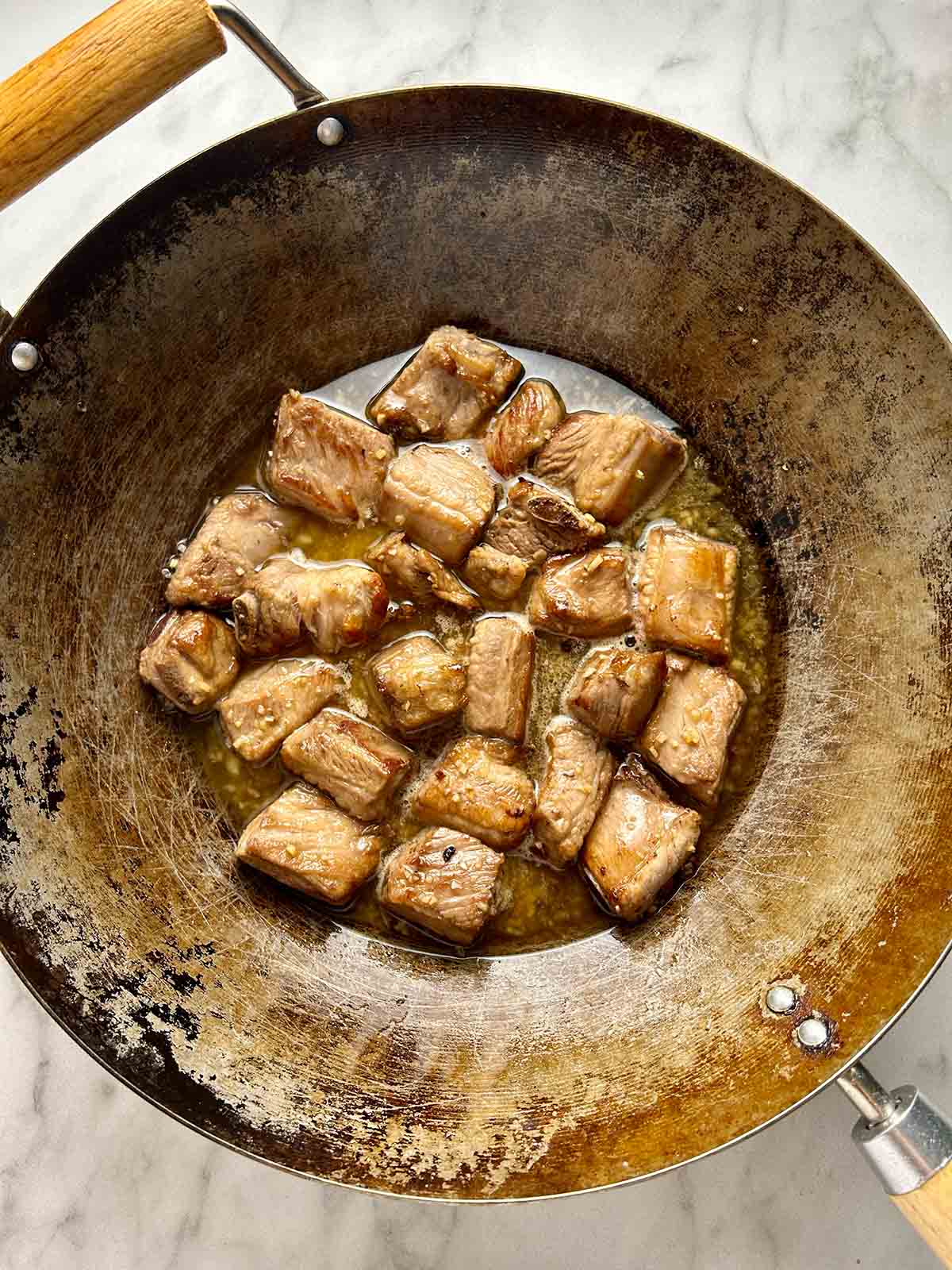
STEP 4: Add the honey, rice wine vinegar, soy sauce, and water. Bring to a boil over high heat, then reduce to medium-low. Cover and simmer for 20 minutes. If you want the ribs to be extra tender, you can simmer them for an additional 20 minutes.
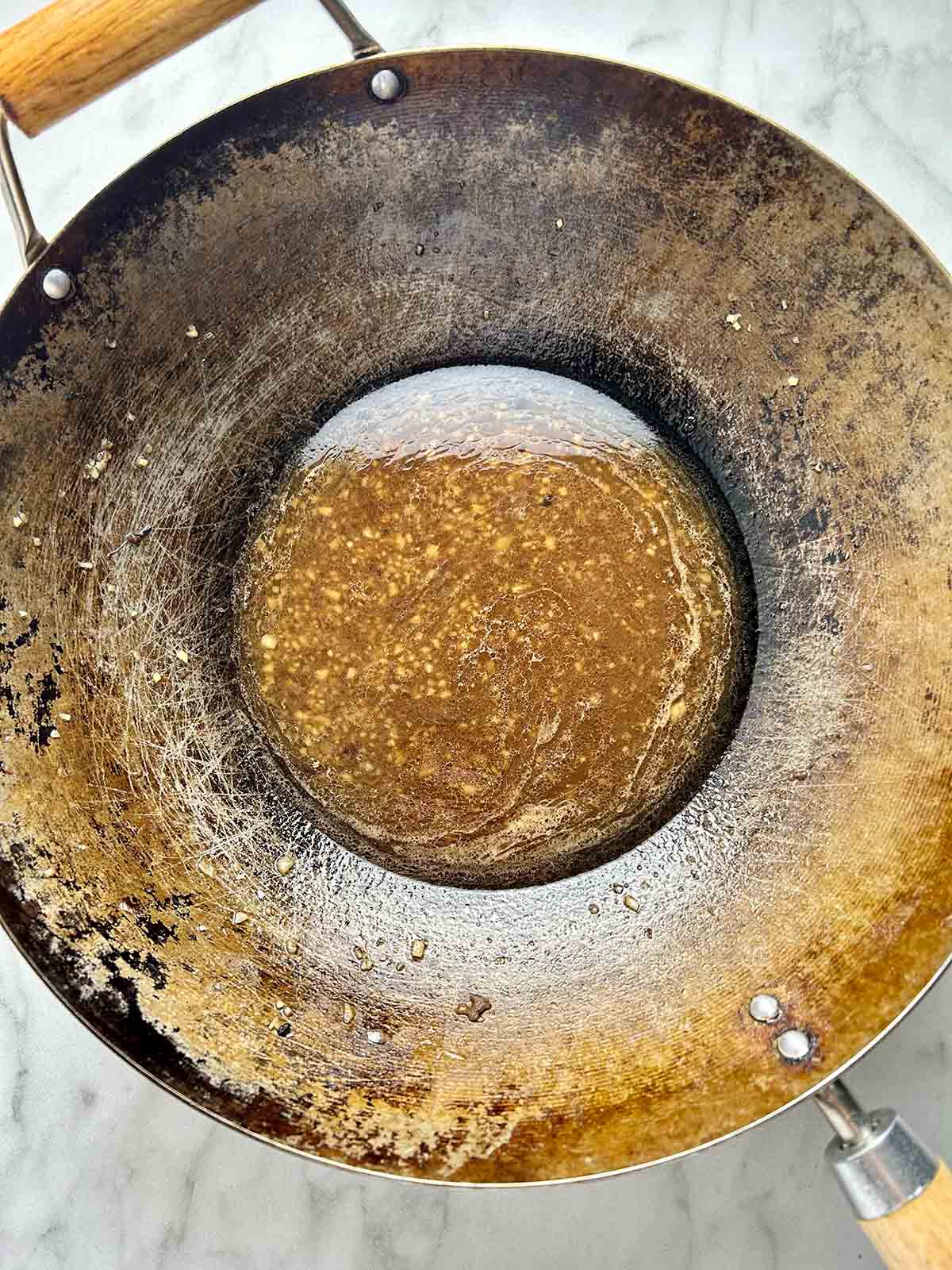
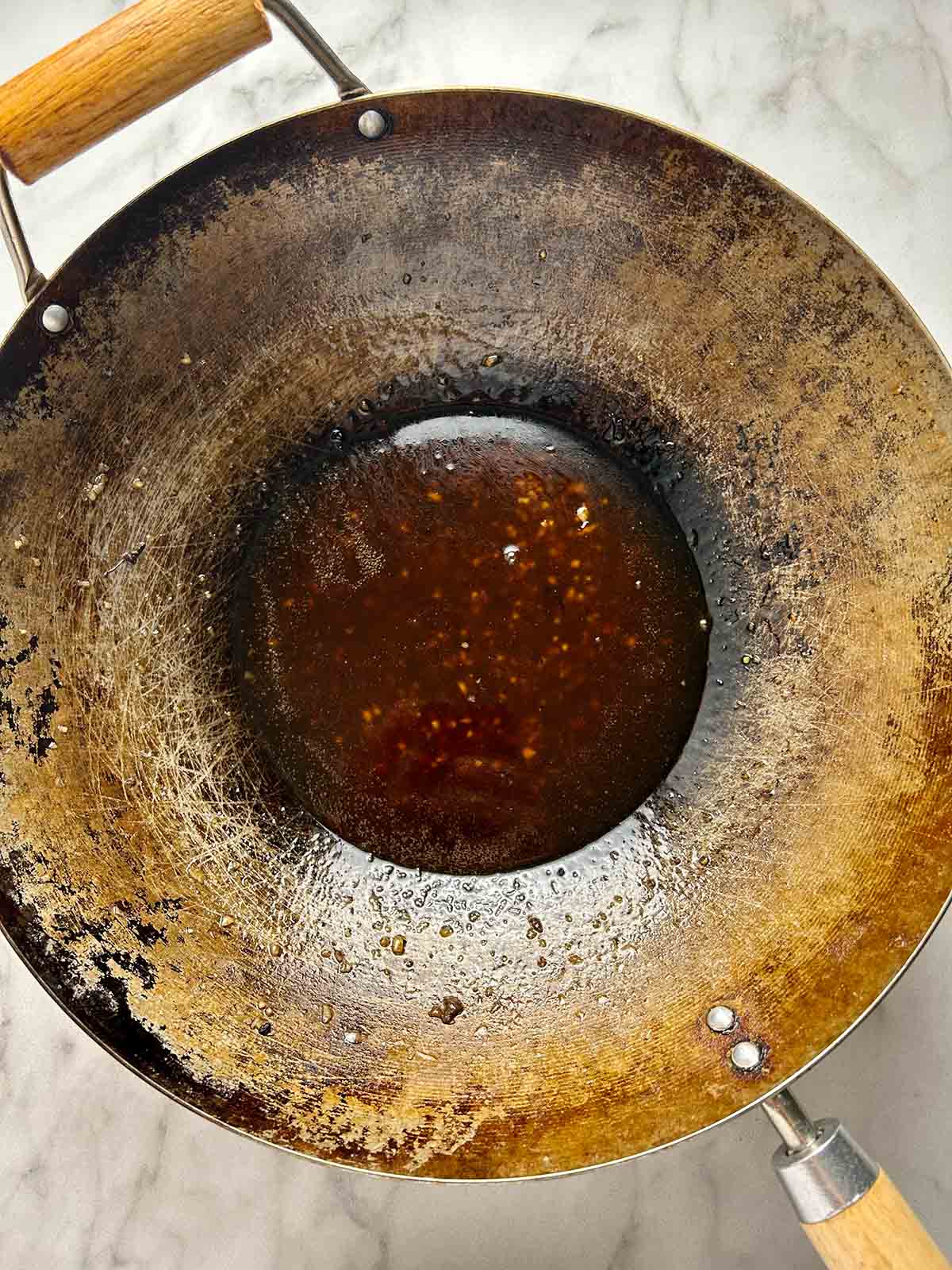
STEP 5: Remove the ribs to a bowl, leaving the sauce in the wok. Increase the heat to high and boil the sauce until it reduces to about ¾ a cup, about 5 minutes. The sauce should be thick enough to coat the back of a spoon. If the sauce is too thin, boil it for a few more minutes.
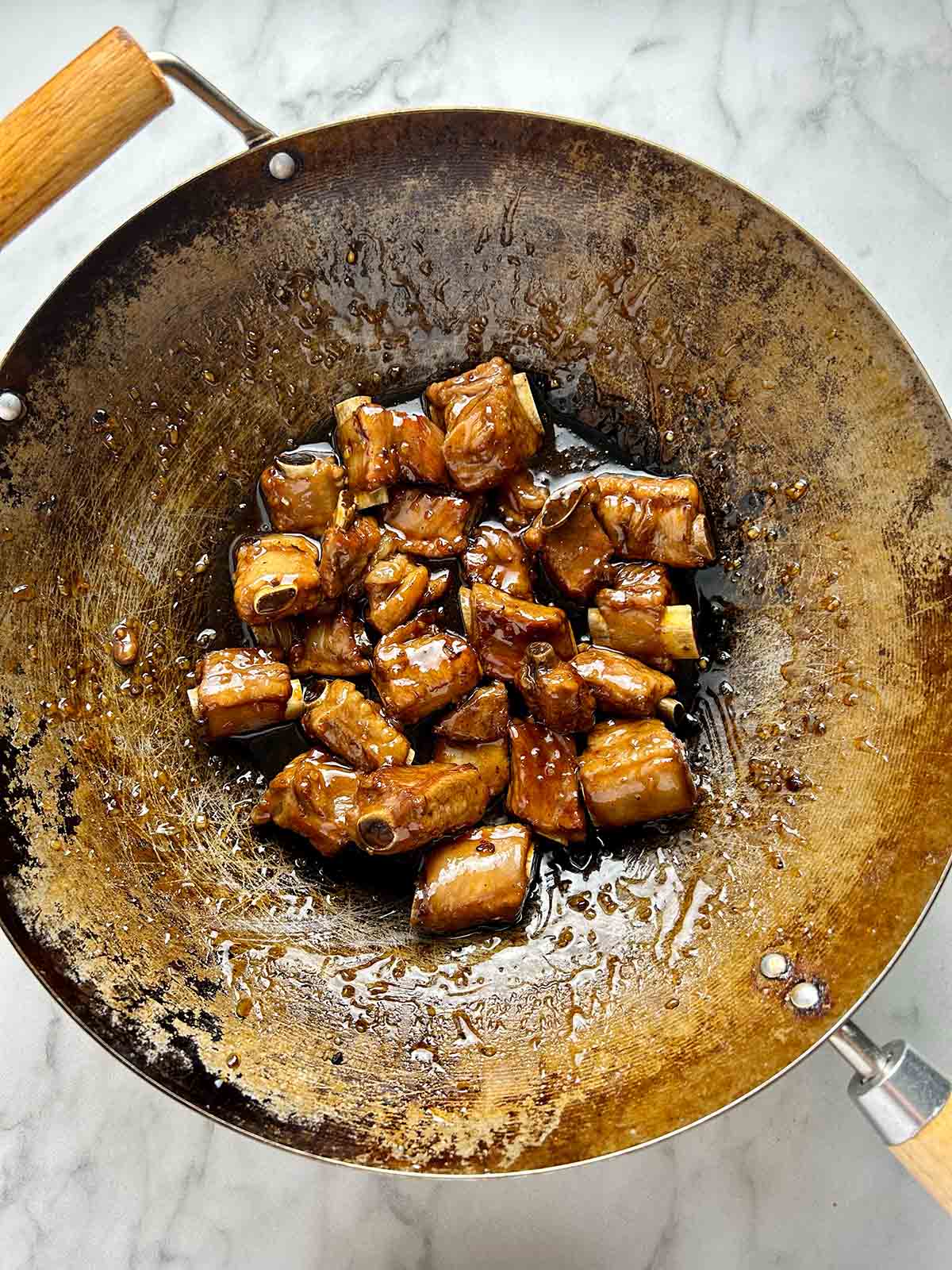
STEP 6: Return the ribs to the wok and add 1 tablespoon of Chinkiang vinegar. Stir to coat everything evenly then serve immediately with rice!

👨🍳 Deep-Frying Variation
When I told my dad I was making honey garlic ribs, the first thing he suggested was deep-frying them instead of pan-frying. Apparently, this is a common technique in China because it imparts more caramelization to the ribs and helps the sauce coat them better.
If you want to try it, heat your oil to around 350-400℉ and fry the ribs for 2-3 minutes until golden brown. Drain and then proceed with the recipe as directed.
📋 Recipe
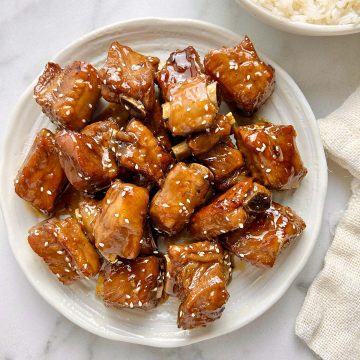
Honey Garlic Spare Ribs
Ingredients
- 2 pounds spare ribs (also known as side ribs)
- 2 tablespoons neutral oil
- 6 cloves garlic (minced)
- ⅓ cup honey
- 3 tablespoons rice wine vinegar
- 1 ½ tablespoons soy sauce
- ¼ cup water
- 1 tablespoon Chinkiang vinegar
Instructions
- Rinse the ribs under cold tap water and then pat dry with paper towels.
- Heat 2 tablespoons oil in a wok over high heat. Add the ribs in a single layer and cook them for 1 minute without touching them. The ribs will initially stick to the wok but they will release after 1 minute. Flip the ribs over and cook the other side for another 1 minute until golden brown.
- Reduce the heat to medium, add the garlic, and cook for 45 seconds until fragrant. Be careful not to burn the garlic here. If the wok is too hot, remove it from the heat.
- Add the honey, rice wine vinegar, soy sauce, and water. Bring to a boil over high heat, then reduce to medium-low. Cover and simmer for 20 minutes. If you want the ribs to be extra tender, you can simmer them for an additional 20 minutes.
- Remove the ribs to a bowl, leaving the sauce in the wok. Increase the heat to high and boil the sauce until it reduces to about ¾ a cup, about 5 minutes. The sauce should be thick enough to coat the back of a spoon. If the sauce is too thin, boil it for a few more minutes.
- Return the ribs to the wok and add 1 tablespoon of Chinkiang vinegar. Stir to coat everything evenly then serve immediately with rice!


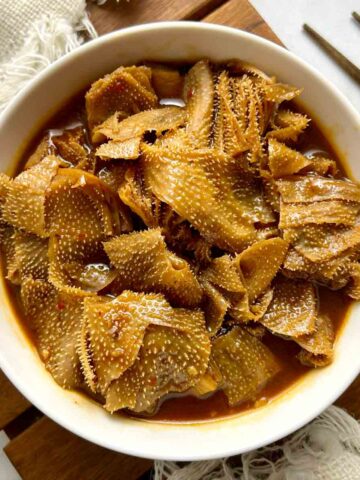


Diane
These came out sticky and yummy! Will make again
Sarah
I didn't add water. I also made a smaller portion for one person (me) so it was still runny sauce but not really. Anyways. I didn't continue because the ribs were over cooked. I also eye measured and tastes great. Too bad I can't leave a pic. It tastes great
Grump
Hey Sarah, thanks for trying the recipe. Yeah, the ribs will overcook if you leave them in the wok too long. I find 20 minutes on medium-low is perfect though. You should remove them in step 5 and boil the sauce to thicken it, then re-toss everything to combine. Glad it still tasted good!